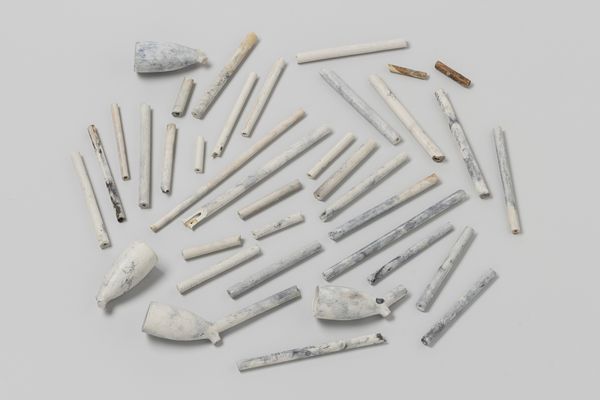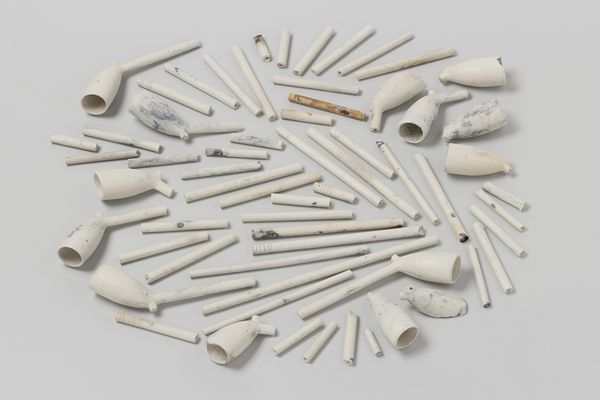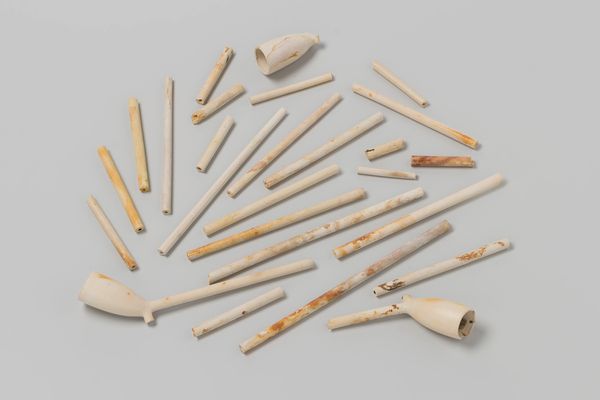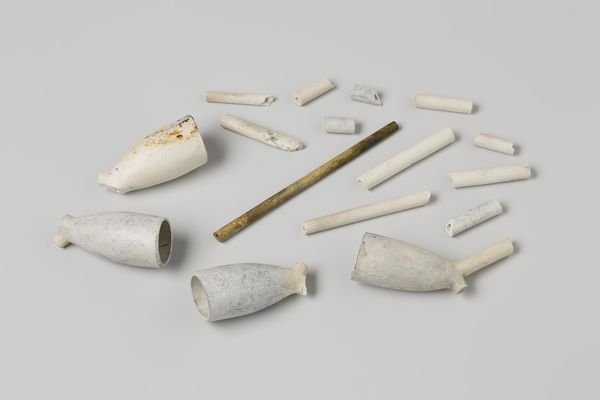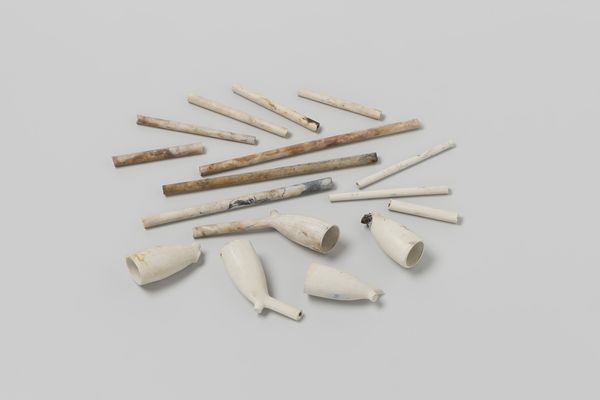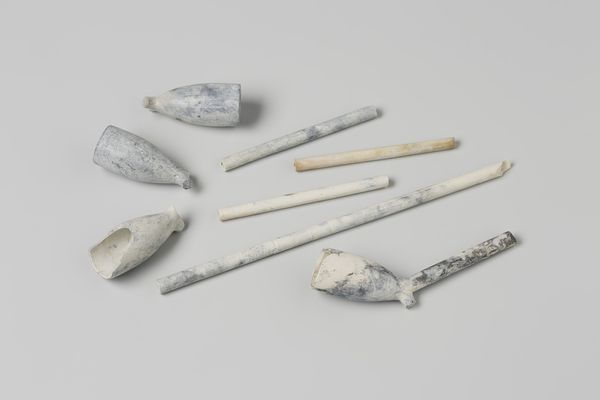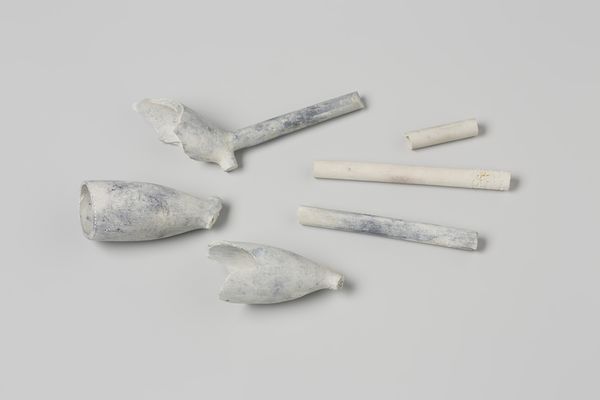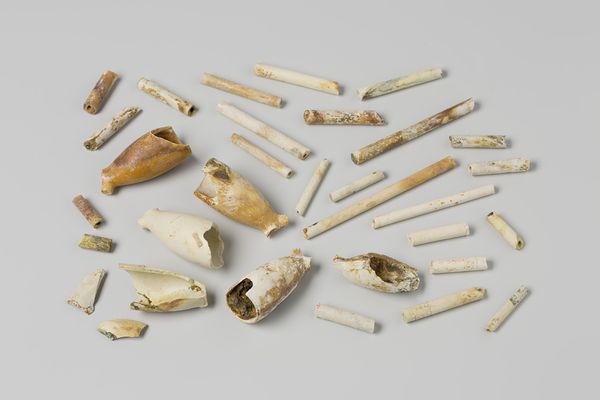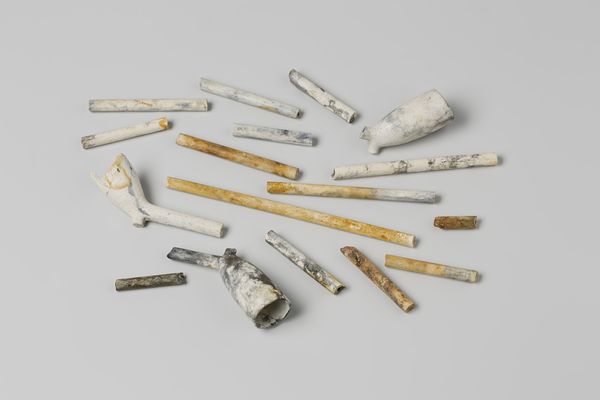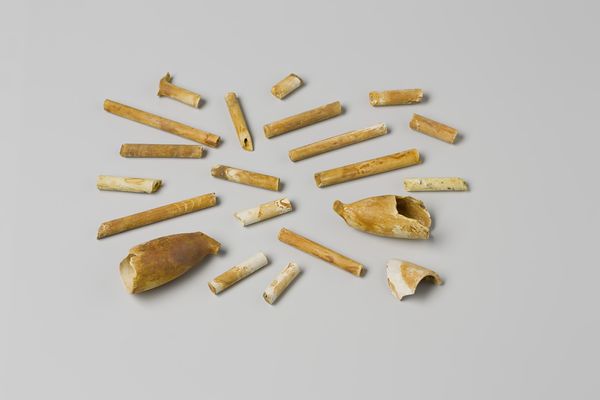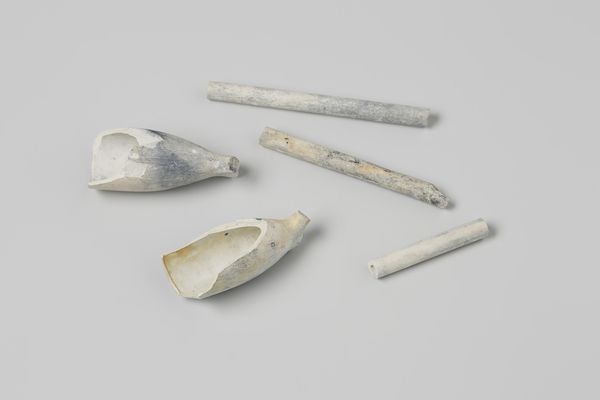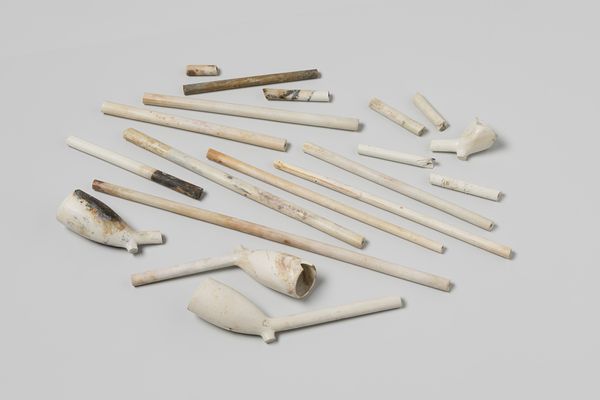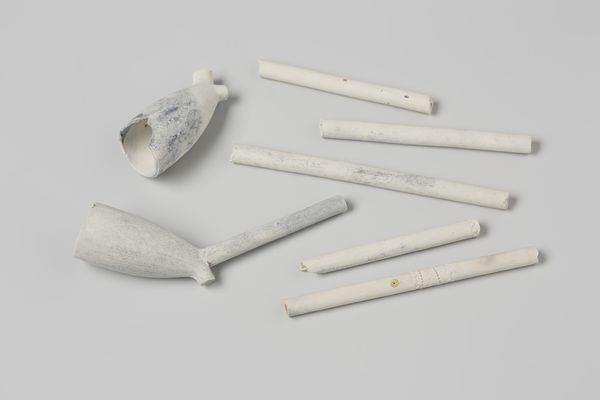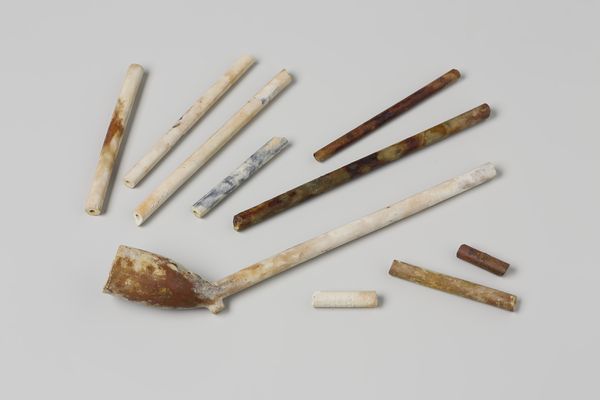
Fragmenten van pijpenkoppen en pijpenstelen uit het wrak van de Oost-Indiëvaarder 't Vliegend Hart Possibly 1700 - 1735
0:00
0:00
ceramic, found-object
#
dutch-golden-age
#
ceramic
#
found-object
Dimensions: length 5.1 cm, width 2 cm, depth 3 cm, length 2.8 cm, diameter 0.6 cm
Copyright: Rijks Museum: Open Domain
These fragments of pipe heads and stems were recovered from the wreck of the Dutch East Indiaman, ‘t Vliegend Hart. Made from white clay, these pipes were formed by hand using molds, then fired in kilns. Notice how the material has transformed: the soft, workable clay becomes hard and brittle through heat, yet also fragile, as evidenced by the broken pieces. Tobacco, although initially a luxury, became a popular commodity by the 17th century. These pipes would have been produced en masse to meet this growing demand. Consider the labor involved in extracting clay, shaping each pipe, and firing them. The pipes evoke a culture of leisure and consumption, yet their fragmented state serves as a reminder of the inherent risks of global trade and the human cost of colonial expansion. These unassuming objects are a powerful testament to the complex entanglements of craft, commerce, and history.
Comments
No comments
Be the first to comment and join the conversation on the ultimate creative platform.
